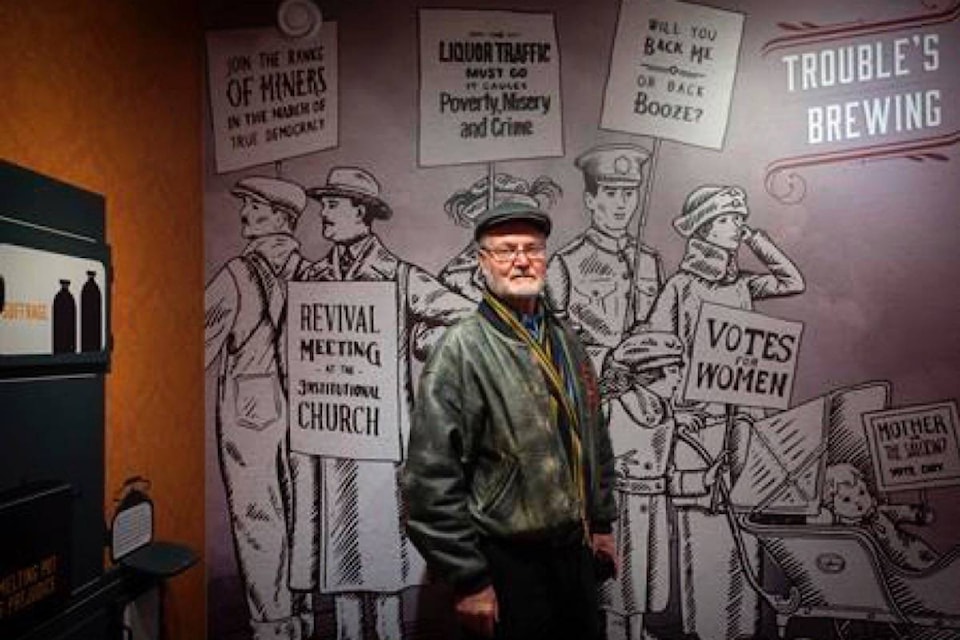A notorious 1922 police shooting in southwestern Alberta and the sensational trial that followed caused many to wonder whether enforcing alcohol prohibition was worth the trouble.
Alberta’s move to outlaw drinking in 1916 was wildly unpopular in the Crowsnest Pass, a cluster of coal mining towns nestled in the Rocky Mountains not far from the B.C. boundary.
The area became a hotbed of bootlegging and rum running, with prominent businessman Emilio Picariello — known also as “Emperor Pic” or the “Bottle King” —dominating the trade.
But on Sept. 21, 1922, Picariello got word that his son was wounded in a police stop. That led to a deadly confrontation outside the Alberta Provincial Police barracks in downtown Coleman hours later.
No one knows for sure whether Picariello or family friend Florence Lassandro fired the shot that killed Const. Stephen Lawson. Both were hanged the following spring — Lassandro the only woman in Alberta to meet that fate.
“It gripped the nation,” said Fred Bradley, a Crowsnest Pass heritage advocate. “It would have been the 1920s version of the O.J. Simpson trial.”
With provinces plotting out how they will manage the regulation and distribution of recreational marijuana once it becomes legal this summer, history buffs see some parallels to the waning days of alcohol prohibition in Canada.
Every province had its own approach to battling booze in the early 20th century.
And, like the way the federal government has approached the legalization of cannabis, the rules for ending prohibition of alcohol were up to each province.
Booze flowed freely in British Columbia three years before Alberta, so rum running between the two provinces was rampant.
READ: Pot shops speak out on B.C.’s proposed rules on age, retail plan
For many in Alberta, the Lawson shooting underscored how difficult and dangerous it was to police prohibition, Bradley said.
The province voted to repeal the policy six months after Picariello and Lassandro were executed. Booze sales were legal again in 1924.
Other provinces, too, grew weary of the corruption and violence that came with prohibition. Nearly a century later, the Liberal government has said one of the main goals of legalizing marijuana has been to take organized crime out of the picture.
“The end of prohibition was brought about because people began to recognize that the cure, as it were, was worse than the disease,” said Vancouver historian Daniel Francis.
Prohibition had mostly ended in Canada by the end of the 1920s, but it lasted until 1933 in the United States.
That presented a lucrative window of opportunity to supply the U.S. market.
The distilling business founded by the now-prominent Bronfman family made a fortune. Fishermen in B.C. made good money transporting booze down the coast as a side business.
“They saw an opportunity to make a few bucks,” said Francis. ”Most of them were small-time businessmen. They weren’t big crooks.”
When prohibition ended in the Unites States, the low-level rum runners mostly got out of the illicit trade and went back to their law-abiding lives, said Francis.
“They had no regrets over what they’d done and no guilt that they had been engaging in criminal activity,” he said. ”They saw themselves as a public service satisfying a quite understandable public need.”
Some of the kingpins, meanwhile, went on to deal in harder drugs like heroin or cocaine. And some people who served booze on the sly during prohibition became legit vendors at hotels and restaurants.
But Just because booze was legal didn’t mean it was a free-for all, said Dan Malleck, an associate professor of health sciences at Ontario’s Brock University who specializes in the history of drug and alcohol prohibition.
At Ontario outlets, there were no displays of products on offer. A customer had to fill out a form, line up at a counter and hand a passport-like booklet to a clerk, who would note each purchase.
Bottles were handed over concealed in brown paper bags.
It was no fun, but people put up with it.
“Most people were decent citizens who wanted to follow the rules,” Malleck said.
There was a bit of a clean-up period while governments tried to nail down the right number of stores, product prices and authorized drinking locations.
Provinces will have to find a similar balance once pot is legal, Malleck said, and its effectiveness will depend on how easily consumers can get what they want the legal way.
“The black market always will exist,” said Malleck.
“But after prohibition that black market in booze was a fraction of what it was.”
Lauren Krugel, The Canadian Press
